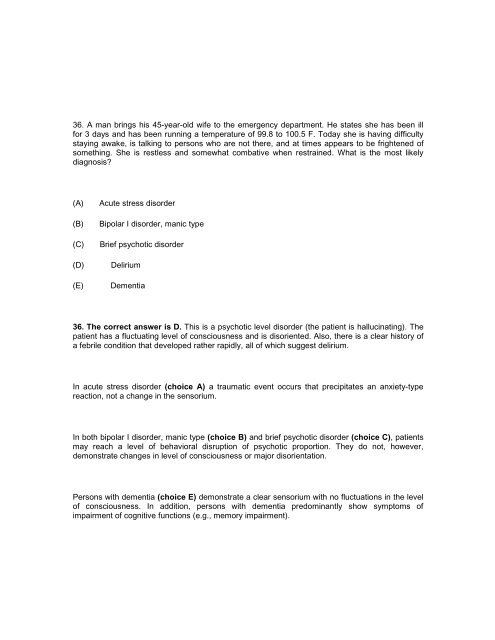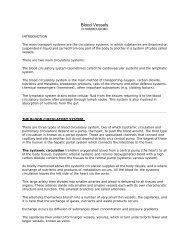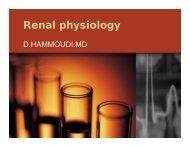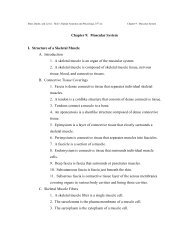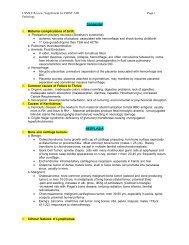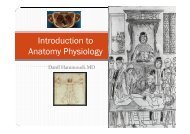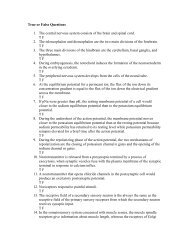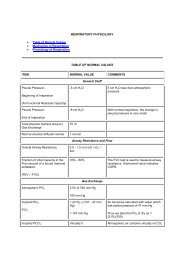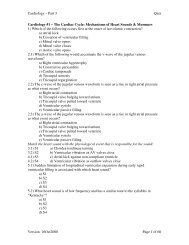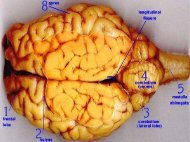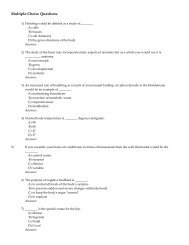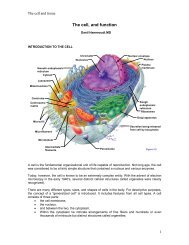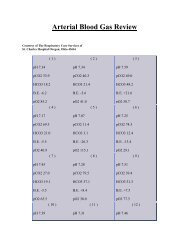L:\usmle review 7 - Sinoe medical homepage.
L:\usmle review 7 - Sinoe medical homepage.
L:\usmle review 7 - Sinoe medical homepage.
You also want an ePaper? Increase the reach of your titles
YUMPU automatically turns print PDFs into web optimized ePapers that Google loves.
36. A man brings his 45-year-old wife to the emergency department. He states she has been ill<br />
for 3 days and has been running a temperature of 99.8 to 100.5 F. Today she is having difficulty<br />
staying awake, is talking to persons who are not there, and at times appears to be frightened of<br />
something. She is restless and somewhat combative when restrained. What is the most likely<br />
diagnosis<br />
(A)<br />
(B)<br />
(C)<br />
(D)<br />
(E)<br />
Acute stress disorder<br />
Bipolar I disorder, manic type<br />
Brief psychotic disorder<br />
Delirium<br />
Dementia<br />
36. The correct answer is D. This is a psychotic level disorder (the patient is hallucinating). The<br />
patient has a fluctuating level of consciousness and is disoriented. Also, there is a clear history of<br />
a febrile condition that developed rather rapidly, all of which suggest delirium.<br />
In acute stress disorder (choice A) a traumatic event occurs that precipitates an anxiety-type<br />
reaction, not a change in the sensorium.<br />
In both bipolar I disorder, manic type (choice B) and brief psychotic disorder (choice C), patients<br />
may reach a level of behavioral disruption of psychotic proportion. They do not, however,<br />
demonstrate changes in level of consciousness or major disorientation.<br />
Persons with dementia (choice E) demonstrate a clear sensorium with no fluctuations in the level<br />
of consciousness. In addition, persons with dementia predominantly show symptoms of<br />
impairment of cognitive functions (e.g., memory impairment).


